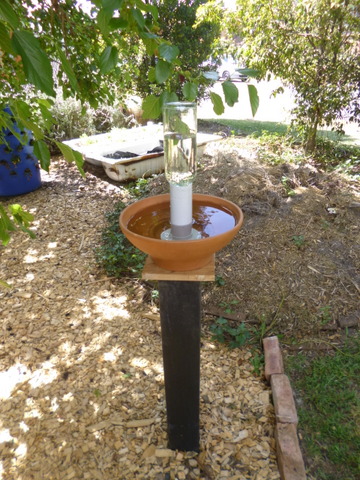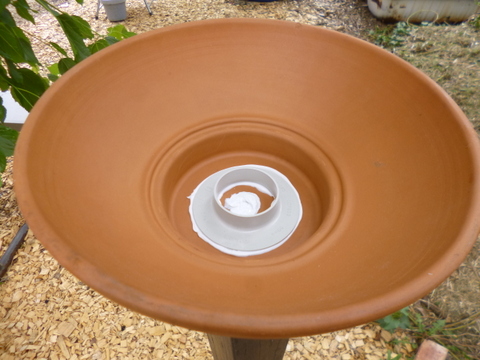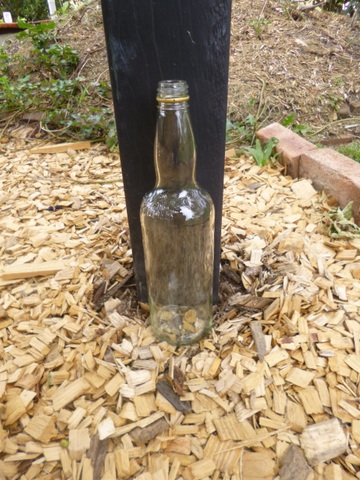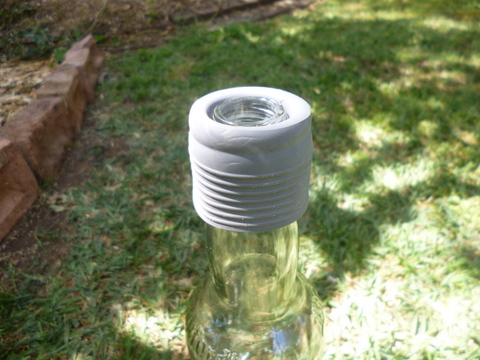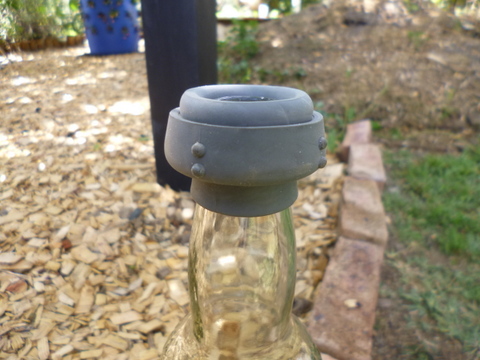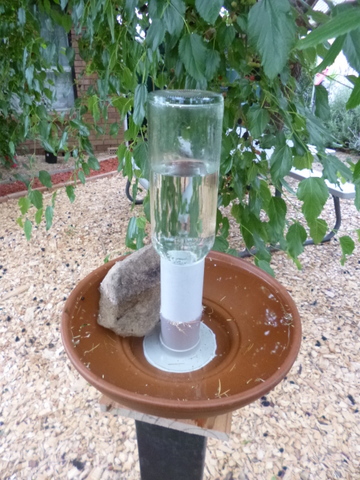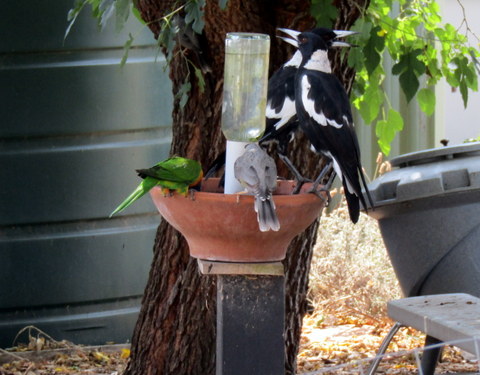Having a source of water open for the use of wild creatures can benefit the whole ecosystem which is your yard. It may be utilised by bees and other insects, microbats or the birds for which it is named (hence the inverted commas around the word ‘bird’ in the title). We have a number of water sources around the back yard but nothing permanent in the front, so it was time for a bird bath. As usual I wanted to see if I could put something together from stuff I had floating around the house, I also wanted it to have a reservoir of some description to help it stay fuller for longer and hence be ‘self-watering.
The bowl to hold the water for the birdbath came in the form of a wide but not too deep terracotta plant pot that was not currently in use, apart from being full of slowly decomposing chokoes (don’t ask). The first task was to block the drain hole, easily done by some white silicon. All I did was place a plastic bag under the pot then sploodge (technical term) in the silicon until the hole was filled to the brim. I then left it for 24 hours so the silicon could cure.
To add the reservoir my original thought was to set it up so that a 1.25 litre or 2 litre PET bottle would do the trick. To put it into place I used some more silicon to attach a 50mm floor flange upside down to the bottom of the pot in the centre. Then I would put some 50mm pipe with holes in it into the upside down flange and stick the PET bottle on top of that. The problem was that it was for the front yard and the PET bottle would look like crap! So I decided to use a spare 750ml glass (ex cordial) bottle with a longer neck which would be much more stable and have a better ambience (for the birds I mean).
I cut the length of pipe such that the lip of the bottle was about 12mm below the rim of the dish, so that when the water level dropped below that point water would flow from the upturned bottle into the birdbath, refilling it. To facilitate this water flow I drilled a series of 3mm holes around the pipe about 25 – 30mm below the rim of the dish.
I had sanded the rim of the pipe in contact with the shoulder of the bottle to make it a bit more stable but it still moved about a bit because the neck of the bottle was so much narrower than the 50mm pipe. I was concerned that if the bottle was moving about it might put the birds off. So (strangely enough) I had a spare rubber 25mm cuff used to connect 25mm flexible greywater tubes to outlets left over from the constructed wetland. By pushing it onto the neck of the bottle and folding it over (with some effort) on itself twice it gave me a very snug fit, with no movement of the bottle at all.
The final touch for the bath itself was a sandstone rock in one side so that any insects wanting a drink wouldn’t fall in and be unable to get out. Already a cicada and a couple of beetles have used it!
With the birdbath itself completed I needed to set up a stand for it, high enough so that the local cats would not be a problem (you want a bird bath…… not a blood bath!) although it seems that the birds are always hassling the cats not vice versa! To make the pedestal I used a recycled 110mm x 110mm x 800mm post. I dug a hole using my earth auger and set it into the earth by about 200mm, then put the spoil back into the hole down the sides of the post. I then tamped down the soil on each side after checking to make sure it was upright with a spirit level. I screwed a 180mm x 180mm bit of pine into the top to support the bath and that was about it.
I did toss up where to site the bath but in the end I put it in the woodchip covered “park” area of our front yard so I wouldn’t have to mow around it, and under the mulberry tree to keep it cool and out of the sun. It is also visible from out bedroom window so I can keep an eye on it without having to go outside and cause mass panic in the customers.
The weather has been hot here lately (Jan 2020) and we have been getting customers!



